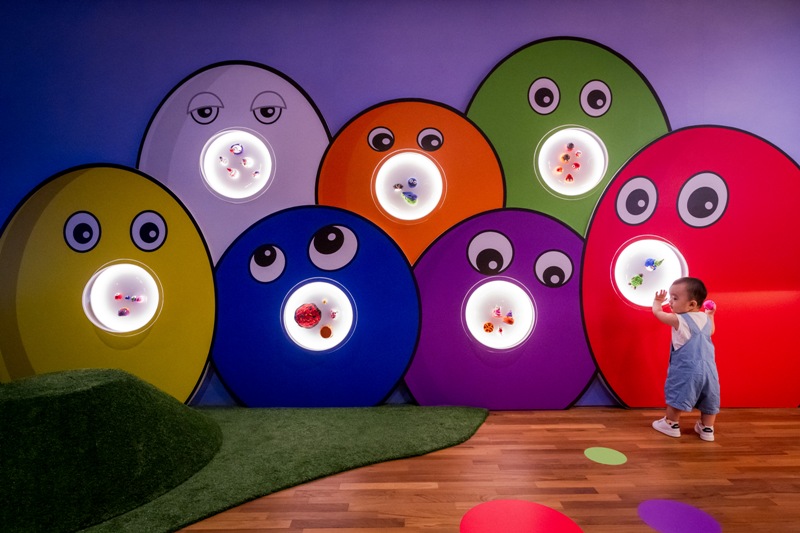
What is a fun thing in Singapore that has started in the past weekend and runs almost for a year? That would be Gallery Children’s Biennale, the family-favourite art and culture outing at the National Gallery Singapore. For the first time since the Biennale began, “all artworks are baby-friendly”, says the Gallery.
Gallery Children’s Biennale has returned for its fifth edition (31 May 2025 to 29 March 2026) with the theme “Tomorrow We’ll Be…”.
Admission fee: Admission and participation in Gallery Children’s Biennale 2025 are free for all visitors. With a recommended donation of SGD 2 to the Gallery, visitors may also pick up a My Biennale Buddy activity booklet onsite, which features extended artist and artwork write-ups, programme information, and a stamping activity where families may redeem a small gift upon visiting all the artworks and collecting the stamps.
Art pack price: The Gallery Children’s Biennale 2025 Art Pack of activities can be purchased for SGD 8 from four vending machines located on Levels 1 and B1 of the Gallery.
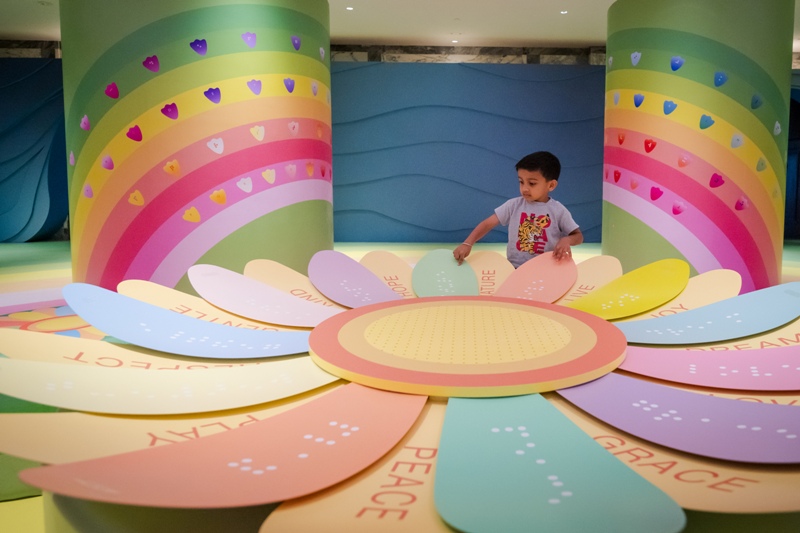
The Biennale aims to inspire young minds to dream big and embrace the boundless possibilities of their future through art and play. Guided by four core values of Joy, Kindness, Dream, and Love, spaces throughout the Gallery will be transformed into vibrant sites for play, learning, and imagination, with eight interactive and larger-than-life artworks by artists from Singapore and Asia.
National Gallery Singapore
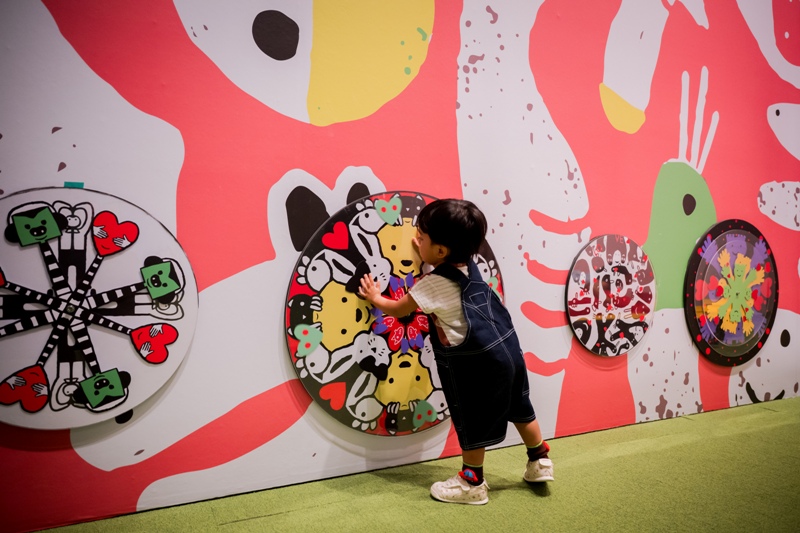
Welcoming babies into the fold of exploring the world through art, the 10-month event has done something special. “For the first time, all artworks in the Gallery Children’s Biennale include baby-friendly experiences that stimulate their auditory and visual senses in a safe environment,” says the National Gallery. “The Biennale champions accessibility and inclusivity for all audiences, with thoughtfully designed spaces and experiences that enable infants, toddlers, children, and persons with disabilities to enjoy and participate in art activities.”
To enhance their experience, visitors may also pick up the Gallery Children’s Biennale 2025 Art Pack, an art activity kit filled with vibrant art supplies, step-by-step instructions, and creative explorations inspired by the eight artworks.
For the first time, the Art Packs are available in two age-banded versions — one for children aged 6 and below; and another for children aged 7 and above — which encourages children to develop a love for art through these enjoyable educational resources.
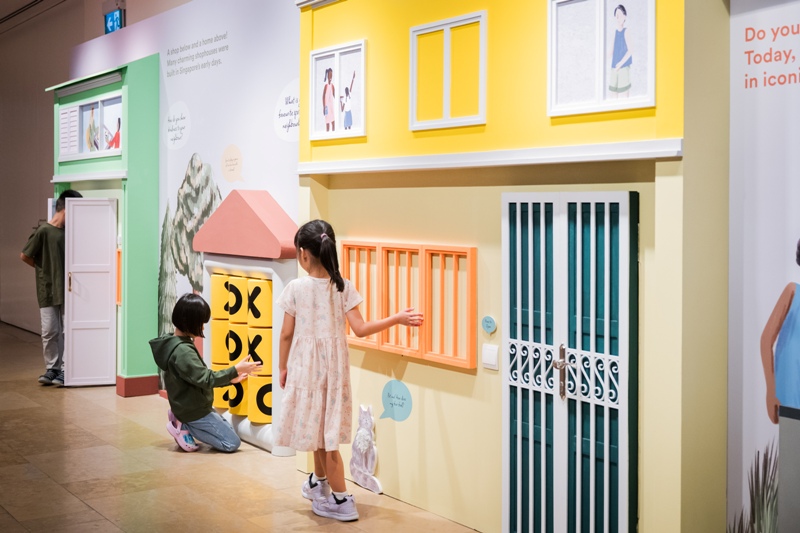
Going into our fifth edition, the Gallery Children’s Biennale has ignited the imaginations and creativity of numerous young museum-goers over the years. Featuring diverse arts talents from our region, we have cultivated a love for art in children from a young age, through fun and accessible artworks and experiences. As we approach the milestone of the Gallery’s 10th anniversary, we seek to continue creating accessible touchpoints and a welcoming space for visitors of all backgrounds to enjoy the arts.
Ong Zhen Min, Executive Director of Gallery Children’s Biennale
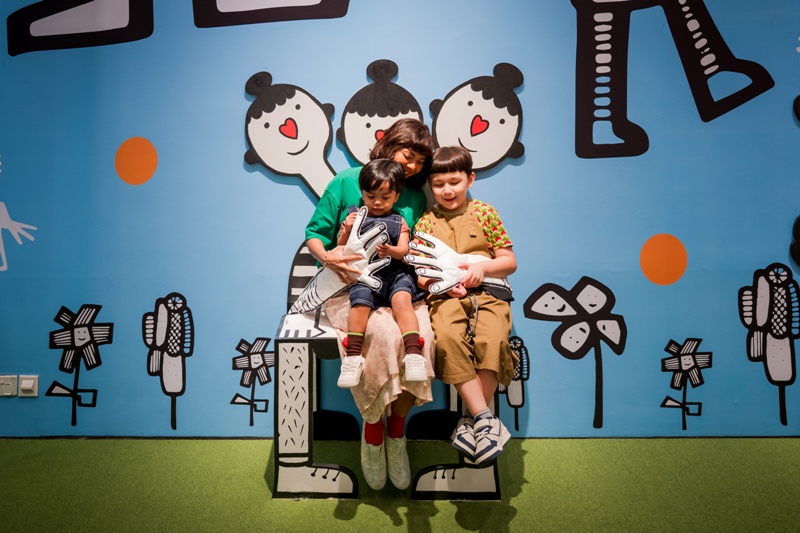
Gallery Children’s Biennale 2025 spotlights eight artworks, with seven commissioned works by local artists Fern Wong and Wyn-Lyn Tan; South Korean artist YeSeung Lee; Australia-based Japanese artist Hiromi Tango; Laotian artist Souliya Phoumivong; Malaysian-based art collective Co2_karbondioksida; Singapore-based Spanish artist Vicente Delgado; and an installation titled Home is Where the Heart Is by the Gallery, inspired by pioneer artist Mohamed Salehuddin’s painting, Malay House, Malacca (c. 1960).
Embracing the future with joy
● Local artist Fern Wong presents Colourful Play at the Gallery’s Coleman Entrance and Spine Hall in this first-time collaboration between the Biennale and ART:DIS (a non-profit organisation for persons with disabilities in the arts).

Children can embrace feelings of joy through splashes of colour, playful textures, and patterns inspired by the artist’s intricate papercut works. The large interactive wall at the Spine Hall invites children to have their hand in completing the artist’s papercut design using magnetic papercut shapes.
Babies and toddlers can have fun with colours, sound and materiality as they engage with a wall of maze, rotating sound makers, textural panels and reflective elements — likened to a sensorial busy board which encourages sensorial, cognitive development and exercising of fine and gross motor skills in early childhood.
Together, these engagements form a growing tapestry of shared creativity that builds on Fern’s perspective on art.
● At Dance Dance Chromatics, local artist Wyn-Lyn Tan welcomes visitors to put on their dancing shoes and explore art through movement and play. This multi-sensory artwork features a digital AI-generated landscape based on 20 years of the artist’s paintings, including serene scenes of the vast sky and the ocean’s waves.

Responding dynamically to motion and touch, when children interact with the motion sensors and four directional floor pads on the ground, they trigger distinct disruptions in the colours and movement of the “living” video-wall of paintings.
Similar to how artists use colours and movement to express feelings, children can explore how this movement-led artwork sparks joy and creates meaningful connections through art.
Empowering the world through kindness
The Gallery Children’s Biennale champions kindness as a strength. The artworks invite visitors to consider the feelings and needs of others, nurturing empathy and emotional intelligence in children and demonstrating how to practise kindness. This enables them to become more understanding towards the different communities around them.
● Kindness Garden by Japanese artist Hiromi Tango invites children to explore a garden of empathy through their senses of touch, sight, hearing, and smell, with a series of giant blooming flowers and a “sound flower” as the centrepiece of the artwork.
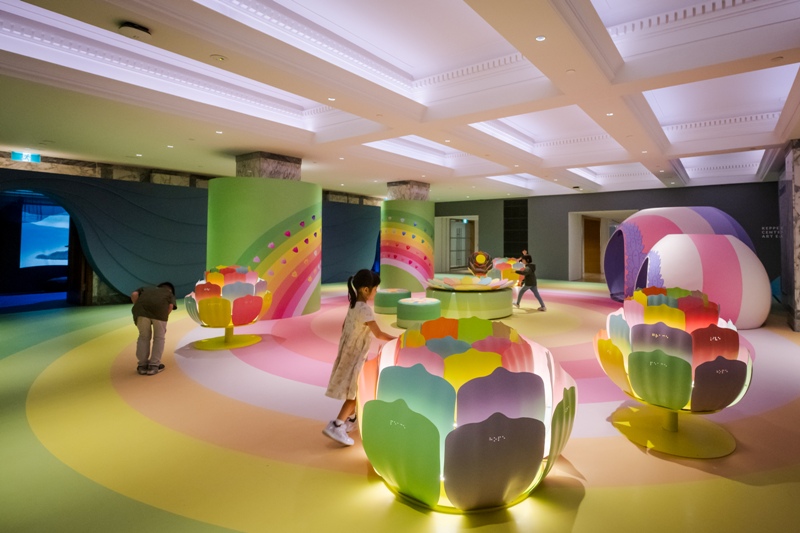
Stepping into the shoes of the visually impaired, children can experience reading words of kindness inscribed in Braille on the petals. By considering the thoughts and experiences of others, the artist hopes to instil a deeper understanding of the different communities around us.
For children who may feel overwhelmed, Kindness Garden includes calm domes where they can rest amongst lavender-scented plushies, making the experience friendly for neurodivergent children.
● The Gallery’s Anteroom is transformed into a cosy theatre space with a screening of a stop-motion film by Laotian artist, Souliya Phoumivong. Lessons in Being Kind follows colourful round blob characters on their journey of self-discovery, touching on topics such as identity, self-acceptance, and the importance of kindness towards others and oneself.

This powerful story prompts children to consider how empathy and compassion can shape the communities around them. The space also displays the adorable clay figures featured in the film (made by young Singaporean participants), an activity area where families can create their own stop-motion video, and a fun balancing chair that engages children to work together to keep it level.
Exploring love through human connections
As a central part of a child’s development, love is a basic emotional need that informs how they form positive attachments to people and their surroundings. Children are prompted to think about what it means to love the people and spaces around them, creating emotional bonds that nurture a sense of belonging.
● I WE THEM by Singapore-based Spanish artist Vicente Delgado invites visitors into a whimsical world where the surroundings and seated areas are reimagined as playful characters — symbols of connection, comfort, and shared moments.

It also features a dedicated area with a foamed ‘flower bed’ and soft sculptures specially designed for babies and toddlers to enjoy free exploration.
Sparking curiosity and emotional engagement, I WE THEM supports sensory and emotional development through vivid colours, bold forms, and gentle textures. Tactile elements include a giant inflatable hand for high-fives, and seven interactive rotating discs in varying sizes tailored to different age groups. Through art and play, I WE THEM celebrates love, empathy, and the simple act of being together.
● Inspired by local pioneer artist Mohamed Salehuddin’s painting Malay House, Malacca (c. 1960) from the National Collection, the installation Home is Where the Heart Is invites visitors to discover the diverse homes and living spaces which make up Singapore’s shared heritage.

The mural brings an imaginary neighbourhood to life, inviting children to explore ideas of belonging and love of their community and home. The mural includes interactive, tactile and auditory elements, such as ringing of a doorbell and opening a door to a neighbour’s home, and even greetings from the friendly neighbourhood pushcart ice cream seller.
Parents and grandparents are also encouraged to share personal memories and stories of the places they once called home, fostering a deeper appreciation of our roots, and promoting intergenerational bonding.
Dreaming of what the future holds
Responding to the core value of Dream, these artworks inspire children to dream of a future that inspires strength, different perspectives and resilience to forge ahead. Children are encouraged to imagine their dreams about their ideal futures through art and play, and even bring them to life.
● Exploring themes of sustainability and revisiting childhood memories, 130kg of upcycled children’s clothing and close to 400 donated toys found new life in Fantasy by the Malaysia-based art collective Co2_karbondioksida.

At the heart of the dreamy space is a striking, large-scale mobile made from repurposed toys, encouraging children to lie back, look up, and dream. Soft cubes sprawled across the cushion floor, both made from donated children’s clothes, create a safe interactive space for babies and young children.
As visitors engage with the installation, they are prompted to reflect on issues such as the impact of waste and overconsumption on the environment, while inspiring dreams of a greener, more sustainable future.
● South Korean artist YeSeung Lee brings her expertise in technology and new media art to the Gallery Children’s Biennale with Imaginary Peach Garden. This digital-enabled experience invites visitors to reimagine the world around them.


Inspired by tazo puzzle cards and animals from Korean and Southeast Asian folktales, the artwork features two approaches for children to create their interpretation of fantastical creatures — a hands-on experience with physical modular foam puzzles; and the use of devices to create digital formations, which are projected onto the wall. The work also includes large inflatable forms which expand and deflate rhythmically, almost like living organisms, evoking a sense of humour, wonder, and unexpected vitality.


